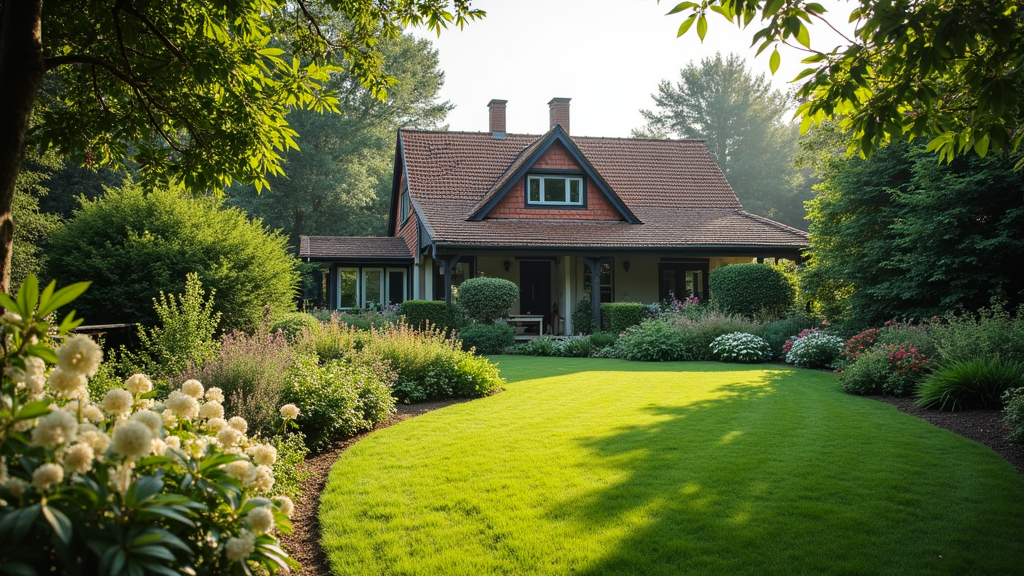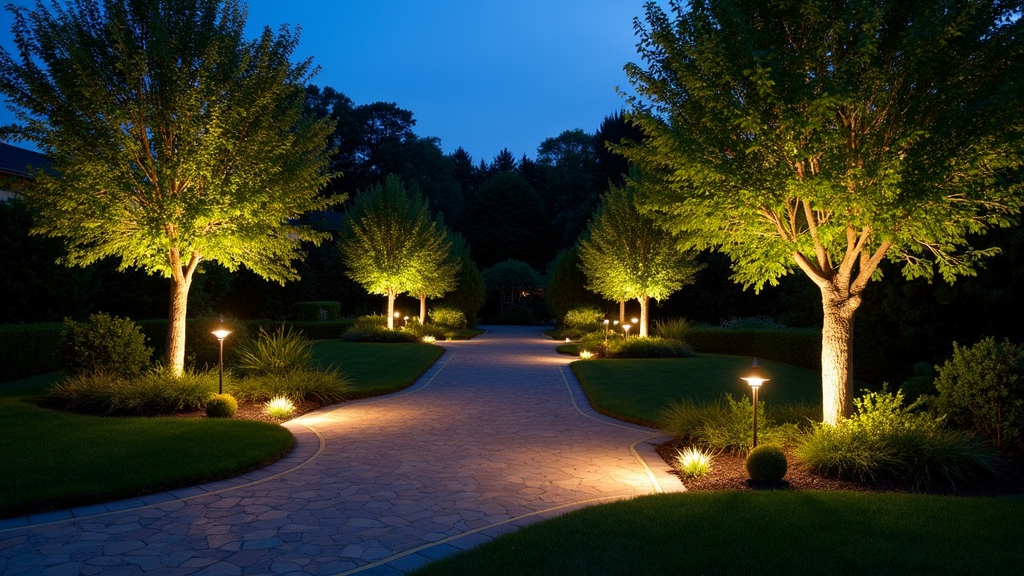Introduction
In the ever-evolving world of outdoor aesthetics, landscape lighting has become a crucial element, not just for decoration but also for safety and functionality. As technology advances, the integration of motion sensors into landscape lights has transformed traditional outdoor lighting into a smart, responsive system. This article delves deep into the role of motion sensors in modern landscape lighting, exploring how they enhance security, convenience, and energy efficiency while also beautifying our gardens and yards.
Understanding Landscape Lighting
What is Landscape Lighting?
Landscape https://eduardonxfu695.bravesites.com/entries/general/-Landscaping-Trends-You-Can-t-Miss-This-Year lighting refers to the strategic placement of lights in outdoor spaces to illuminate paths, highlight features like trees or sculptures, and create ambiance. These installations serve both functional and aesthetic purposes.
Types of Landscape Lights
Path Lights: Used to light pathways for safety. Spotlights: Ideal for highlighting specific features. Flood Lights: Provide broad illumination for large areas. Deck Lights: Enhance outdoor living spaces. Bollard Lights: Line walkways and driveways.Benefits of Landscape Lighting
- Increased Safety: Well-lit paths reduce accidents. Enhanced Beauty: Properly placed lights can transform the look of your garden. Extended Usability: Enjoy your outdoor space even after dark.
The Importance of Outdoor Lighting
Why Invest in Outdoor Lighting?
Investing in outdoor lighting can significantly enhance the appeal and safety of your home. It’s not just about aesthetics; it also adds value to your property.
Key Benefits of Outdoor Lighting
Security Enhancement: Deters potential intruders. Aesthetic Appeal: Creates a warm atmosphere for gatherings. Property Value Increase: Well-lit homes are more attractive to buyers.Common Misconceptions About Outdoor Lighting
- Many believe that outdoor lighting is unnecessary if you have streetlights nearby. Some think all outdoor lights consume excessive energy; however, modern solutions can be energy-efficient.
Introduction to Motion Sensors
What Are Motion Sensors?
Motion sensors are devices that detect movement within a specified range using various technologies like infrared or microwave signals. They trigger actions based on detected movement.
How Do Motion Sensors Work?
When an object moves within the sensor's field of view, it sends a signal to activate connected devices such as lights or alarms.
Types of Motion Sensors Used in Landscape Lighting
Passive Infrared (PIR): Detects heat emitted by objects. Microwave Sensors: Utilize electromagnetic waves to detect motion. Dual Technology Sensors: Combine PIR and microwave technologies for enhanced accuracy.The Role of Motion Sensors in Modern Landscape Lighting
Imagine returning home on a dark night and having your landscape lights automatically illuminate your path as you approach! That’s one example of how the role of motion sensors in modern landscape lighting can elevate your experience outdoors while providing safety and convenience.

Enhancing Security with Motion Sensors
Motion sensors play a pivotal role in enhancing home security by illuminating dark areas as soon as movement is detected, making it difficult for intruders to go unnoticed.
How Does This Work?
The sensor detects movement within its range. It activates the connected landscape lights immediately. The sudden brightness may deter potential threats instantly.Energy Efficiency Through Smart Technology
One significant advantage of incorporating motion sensors into landscape lighting is energy efficiency:
- Lights turn on only when needed, reducing electricity bills significantly. Many modern systems allow homeowners to set timers or sensitivity levels according to their preferences.
Convenience at Your Fingertips
Imagine walking your dog at night or hosting an evening gathering without worrying about turning lights on or off manually:
- With motion sensors, you enjoy hands-free operation. You can focus on what matters—having fun with family and friends!
Integrating Motion Sensors with Smart Home Systems
What is a Smart Home System?
A smart home system integrates various devices that can be controlled remotely through smartphones or tablets, allowing users seamless control over their environment.
How Do Motion Sensors Fit In?
Motion sensors can be integrated with smart home systems to automate landscape lighting:
Use smartphone apps for real-time monitoring. Customize settings based on personal preference or schedule routines.The Benefits of Combining Motion Sensors with Landscape Lights
Increased Safety
With motion-activated lights illuminating pathways upon approach, you significantly reduce the risk of falls or accidents in dark areas around your property.
Aesthetic Enhancements
Well-designed landscape lighting creates stunning visual effects at night:
- Highlighting architectural features Creating shadows that add depth
Choosing the Right Motion Sensor for Your Landscape Lights
Factors to Consider When Selecting a Sensor
Range:- Determine how far you want detection capabilities (e.g., short-range vs long-range).
- Choose sensitivity settings based on local wildlife activity; avoid false triggers from pets!
- Ensure weather-resistant materials suitable for outdoor use are chosen.
Installation Tips for Landscape Lighting with Motion Sensors
DIY vs Professional Installation
While some homeowners opt for DIY installation due to cost savings, hiring professionals can guarantee proper placement and functionality:
Pros & Cons Table
| Pros | Cons | |------|------| | Cost-effective | Requires time & effort | | Personal satisfaction | Risky if not familiar with wiring | | Flexibility | May lack expertise |
Maintenance Best Practices
To ensure longevity and effectiveness:
Regularly clean lenses from dust & debris Check batteries (if applicable) Test functionality periodicallyCommon Challenges with Motion Sensors
Despite their advantages, challenges do exist:
False Alarms
Light activation due to animals or other non-threatening movements may occur:
Solutions:
Adjust sensor sensitivity settings Use directional placement techniquesFAQs About Motion Sensors in Landscape Lighting
FAQ 1: Can I use any type of light fixture with motion sensors?
Yes! Most fixtures are compatible as long as they meet electrical specifications required by the sensor unit itself.
FAQ 2: How do I know which sensor type is best suited for my needs?
Consider factors like coverage area, proximity to busy streets (noise), & wildlife presence when selecting types!
FAQ 3: Will installing these systems increase my electricity bill?
Not necessarily! Since they operate only when detecting movement–most setups save money over time compared to standard lighting setups left on continuously!
FAQ 4: Are there specific brands known for quality motion-sensor-equipped landscape lights?
Absolutely! Some trusted brands include Ring™ Spotlight Cam & Philips Hue Outdoor Lightstrip among others—check product reviews before purchasing!
FAQ 5: Can I customize my lighting patterns through smart applications?
Yes! Many modern setups offer app compatibility allowing effortless customization options via smartphones!
FAQ 6: Do motion sensors work well during adverse weather conditions?
Most quality brands have built-in protective measures ensuring reliability even during rainstorms or snowfall depending upon design specs—always check product details beforehand!
Conclusion
In conclusion, the role of motion sensors in modern landscape lighting cannot be overstated; they provide enhanced security, energy efficiency, and convenience while adding beauty to our outdoor spaces. By integrating these advanced technologies into our landscaping solutions, we’re not just investing in functionality but also crafting inviting environments where we can enjoy nature safely after sunset.

Whether you're looking to improve safety around your property or wishing simply to bask under beautifully lit trees during summer nights—the right combination will elevate both experiences immensely! So why wait? Embrace this innovative technology today!